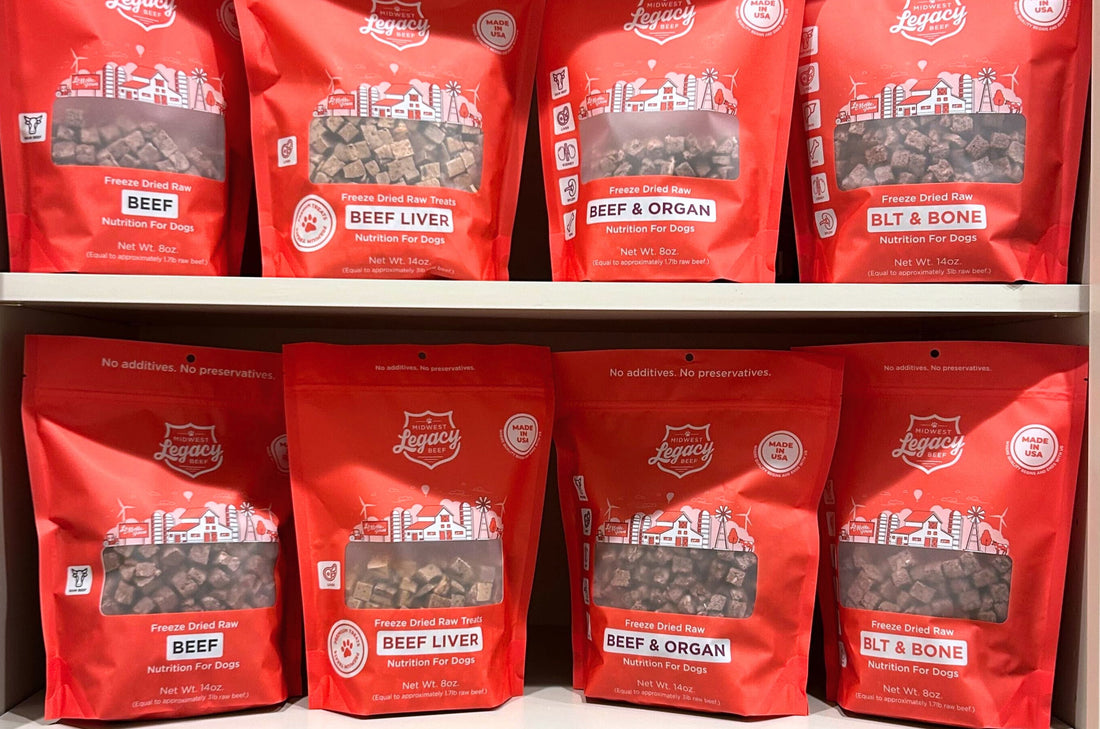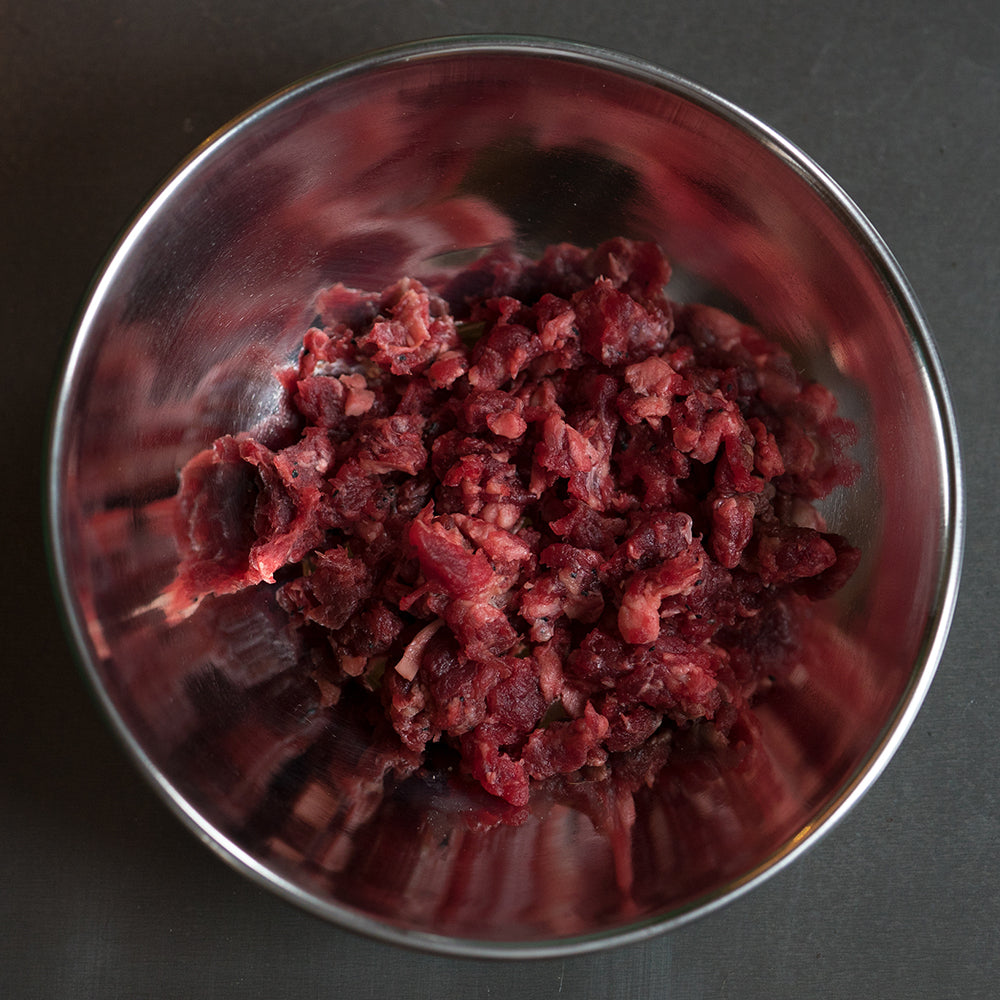
Freeze-Dried Dog Food vs. Kibble: Which is Better for Your Dog?
Share
When it comes to feeding your dog, two of the most popular options are freeze-dried dog food and kibble (dry dog food). While both provide essential nutrition, they differ in several key aspects that can impact your dog’s health and preference. Let’s break down the differences between these two types of dog food.
Ingredients
- Freeze-Dried Dog Food: This type of food, such as Midwest Legacy Beef freeze-dried dog food, is made from raw meat, organs, and bones. It closely mimics a dog’s ancestral diet, providing a more natural feeding option. The raw ingredients are simply diced and freeze-dried, or ground and tubed for raw frozen products.
- Kibble (Dry Dog Food): Kibble, on the other hand, is often made from a mix of meat meals, grains, vegetables, and other additives. It typically contains higher levels of carbohydrates and fillers like grains or potatoes, which can be less aligned with a dog’s natural diet.
Processing Method
- Freeze-Dried Dog Food: The freeze-drying process involves freezing the raw ingredients and then placing them in a vacuum chamber to remove moisture through sublimation. This method preserves the food in a dehydrated state without cooking it, which helps retain most of the nutrients, flavors, and natural enzymes of the ingredients.
- Kibble (Dry Dog Food): Kibble is produced through a process called extrusion, where ingredients are cooked at high temperatures and pressure before being shaped into small pieces. This cooking process can reduce some nutrient levels, which is why synthetic vitamins and minerals are often added to ensure nutritional completeness.
Nutrient Retention
- Freeze-Dried Dog Food: One of the key benefits of freeze-dried dog food is its ability to preserve more nutrients compared to kibble. This includes essential vitamins, minerals, and proteins that are crucial for your dog’s overall health.
- Kibble (Dry Dog Food): The high-temperature cooking process used to make kibble can diminish some vitamins and enzymes. While kibble is still nutritionally balanced, it may not provide the same level of nutrient retention as freeze-dried options.
Texture and Palatability
Freeze-Dried Dog Food: Freeze-dried dog food typically has a more natural texture, similar to fresh raw food. The intense flavors retained during the freeze-drying process can make it more palatable for some dogs.
Kibble (Dry Dog Food): Kibble is known for its crunchy texture and often comes in various shapes and sizes. While many dogs enjoy the crunchiness, it may not be as flavorful as freeze-dried food.
Rehydration
- Freeze-Dried Dog Food: One of the advantages of freeze-dried dog food is that it can be served dry or rehydrated with water. Rehydration restores the food to a more familiar texture, which can be appealing for dogs who prefer a moist meal.
- Kibble (Dry Dog Food): Kibble is generally served dry, although some owners choose to moisten it with water or broth. However, it’s not designed to be rehydrated like freeze-dried food.
Shelf Life and Storage
Freeze-Dried Dog Food: Once opened, freeze-dried dog food has a longer shelf life compared to traditional kibble. It is more resistant to moisture and oxidation, which helps maintain its freshness over time.
Kibble (Dry Dog Food): Kibble often contains preservatives to prevent spoilage and may include artificial chemicals. While it can also have a long shelf life, it may lose some freshness and nutritional value over time once the bag is opened.
Conclusion
Both freeze-dried dog food and kibble have their unique advantages, and the choice ultimately depends on your dog’s preferences and nutritional needs. Freeze-dried dog food offers a more natural and nutrient-rich option, while kibble is convenient and has a longer history of use. Consider what’s best for your dog’s health and lifestyle when making your decision.

